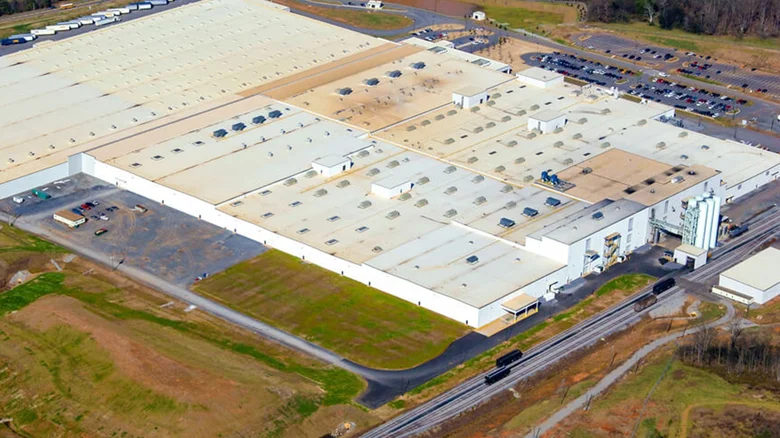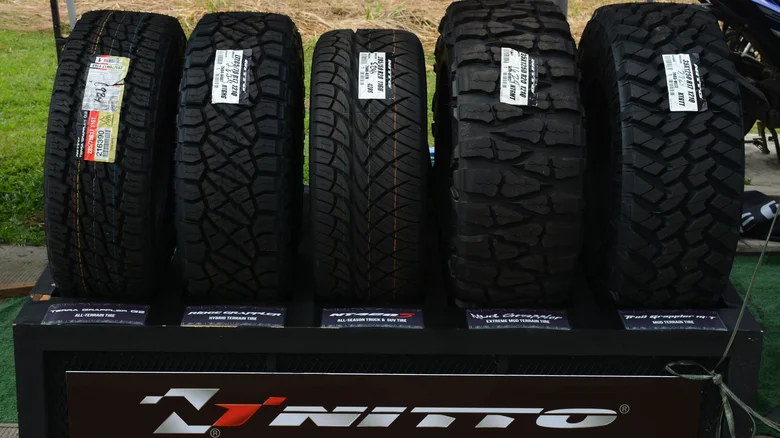Let’s be real—tires aren’t exactly the most glamorous topic. But when it comes to Nitto Tires, there’s a lot more under the hood (or should I say, under the tread?) than meets the eye. Whether you’re a car enthusiast, an off-road adventurer, or just someone who appreciates quality craftsmanship, you’ve probably wondered: Where are Nitto Tires made, and who owns the company?
Well, buckle up, because we’re about to take a deep dive into the world of Nitto Tires. Spoiler alert: it’s a story filled with innovation, global connections, and a whole lot of rubber.
Where Are Nitto Tires Made?
If you’re in a hurry, here’s the TL;DR: Nitto Tires are primarily made in Japan and the United States. The company has manufacturing plants in both countries, ensuring high-quality production for their global market.
But honestly, that’s just the tip of the iceberg. Let’s peel back the layers (like a tire tread, get it?) and explore the fascinating journey of Nitto Tires.
Who Owns Nitto Tires?
Before we get into the nitty-gritty of manufacturing, let’s talk about ownership. Nitto Tires is owned by Toyota Tsusho Corporation, a Japanese trading company that’s part of the larger Toyota Group. Yep, the same Toyota that brought us the Camry and the Prius.
Toyota Tsusho acquired Nitto Tire in 2011, and since then, the brand has continued to grow and innovate. It’s like when a small indie band gets signed by a major label—except instead of making music, they’re making killer tires.
A Personal Anecdote: My First Encounter with Nitto Tires
I’ll never forget the first time I saw a set of Nitto Tires in action. I was at an off-road event in Moab, Utah, and this tricked-out Jeep came roaring up a rocky incline like it was on a Sunday drive. When I asked the driver what tires he was using, he proudly pointed to the Nitto logo on the sidewall.
“These bad boys?” he said. “They’re unstoppable.”
And honestly, he wasn’t wrong. From that day on, I was hooked.
The Manufacturing Process: Where the Magic Happens

So, where exactly are Nitto Tires made? Let’s break it down.
1. Japan: The Birthplace of Nitto Tires
Nitto Tires was founded in Japan in 1949, and to this day, the country remains a key hub for production. The Japanese plants are known for their precision engineering and cutting-edge technology.
Fun fact: Japan is also home to some of the most rigorous quality control standards in the world. So, when you buy a Nitto Tire made in Japan, you know you’re getting the good stuff.
2. United States: A Home Away from Home
In addition to Japan, Nitto Tires has a major manufacturing presence in the United States. The company operates a state-of-the-art facility in White, Georgia, which produces tires for the North American market.
Why Georgia, you ask? Well, it’s all about logistics. The U.S. plant allows Nitto to meet the high demand for their tires in North America while keeping costs (and shipping times) down.
A Metaphor to Drive the Point Home
Think of Nitto’s manufacturing process like a well-oiled machine (pun intended). Japan is the brain, handling R&D and high-tech production, while the U.S. is the brawn, pumping out tires to meet demand. Together, they create a seamless operation that keeps drivers around the world rolling smoothly.
What Makes Nitto Tires Stand Out?
Now that we know where Nitto Tires are made, let’s talk about what makes them so special.
1. Innovative Technology
Nitto is known for pushing the envelope when it comes to tire technology. From advanced tread patterns to durable compounds, their tires are designed to perform in a variety of conditions.
2. Focus on Performance
Whether you’re hitting the track, tackling off-road trails, or cruising down the highway, Nitto has a tire for you. Their product lineup includes everything from all-terrain tires to high-performance street tires.
3. Commitment to Quality
Thanks to their rigorous manufacturing standards, Nitto Tires are built to last. It’s like the difference between a fast-food burger and a gourmet steak—both will fill you up, but one is clearly superior.
The Global Reach of Nitto Tires

While Nitto Tires are made in Japan and the U.S., their reach is truly global. The brand is sold in over 100 countries, making it a favorite among drivers worldwide.
By the way, if you’ve ever seen a Nitto Tire ad featuring a sleek sports car or a rugged truck, chances are it was shot in one of their key markets, like the U.S., Europe, or Asia.
A Relatable Example: Nitto Tires in Pop Culture
Nitto Tires have even made their way into pop culture. You’ve probably seen them featured in car shows, racing events, and even video games like Forza Horizon. It’s like they’re the Beyoncé of the tire world—everywhere you look, there they are.
FAQ: Your Burning Questions Answered
Let’s tackle some common questions about Nitto Tires.
1. Are Nitto Tires good for off-roading?
Absolutely! Nitto offers a range of all-terrain and mud-terrain tires that are perfect for off-road adventures.
2. How long do Nitto Tires last?
With proper care, Nitto Tires can last anywhere from 40,000 to 60,000 miles. Of course, this depends on driving conditions and maintenance.
3. Are Nitto Tires expensive?
Nitto Tires are mid-to-high range in terms of price, but many drivers feel they’re worth the investment due to their performance and durability.
4. Can I buy Nitto Tires online?
Yes! Nitto Tires are available through a variety of online retailers, as well as local tire shops.
Why Nitto Tires Are Worth the Hype
At the end of the day, Nitto Tires are more than just rubber and tread—they’re a testament to innovation, quality, and global collaboration. Whether you’re a weekend warrior or a daily commuter, there’s a Nitto Tire out there with your name on it.
So, the next time you’re in the market for new tires, consider giving Nitto a spin. Who knows? You might just fall in love.
Share Your Thoughts!
Have you ever used Nitto Tires? What was your experience like? Drop a comment below—I’d love to hear your stories! And if you found this post helpful, don’t forget to share it with your fellow car enthusiasts.








